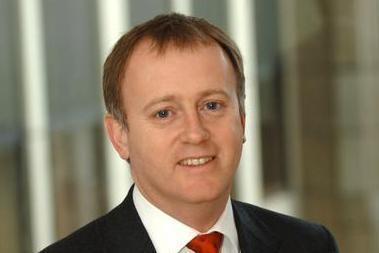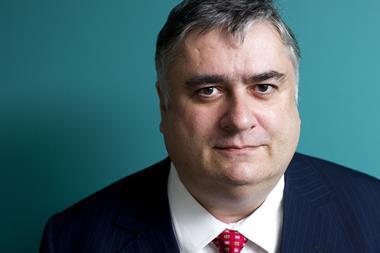London insurance market vows to take steps to deal with accusations of sexual misconduct , as well as poor financial results after two years of major claims payouts
Suffice it to say, it has not been the best of weeks for Lloyd’s of London.
As the last week of March unravelled the firm faced increasing scrutiny, significant financial loss and a blow to its underwriting room. This included reports of sexual harassment made by women on the Lloyd’s Market which its chief executive John Neal deemed “distressing”. Subsequently a set of actions were proposed to increase the ease of reporting such behaviour.
Neal later went on the record condemning these “instances of bad behaviour” in the market which he stated was “not a Lloyd’s I want to be a part of”. “When we do see instances of bad behaviour, and let’s hope they are infrequent, we have got to be public and decisive about the action that we take,” he told Bloomberg Businessweek.
Overall Lloyd’s saw a £1bn loss at a combined operating ratio of 104.5%. Major claims pushed its combined ratio over 100% for two years running. Its 2017 combined operating ratio was 114% with major claims accounting for 18.5% of this figure, while 2018 saw major claims comprise only 11.6% of COR.
But still it held steady, vowing to make a comeback, stripping away eight poorly performing portfolios for 2018 as part of an ongoing review advocating its “improve or remove approach”.
Performance management director John Hancock said to the press that its “results were not where we wanted to be”.
He added: “Our first priority is to get Lloyds back on track to a sustainable and profitable position which has meant some fast and decisive action.
Although Lloyd’s is assuming a more balanced approach, Hancock added: ”Overall, no class of business avoids being closed. He explained that this was part of a stronger plan as it addresses its poorest performers while also looking to maximise its strongest syndicates.
We have also started reviews on acquisition and administration costs across the market. “Those high costs are harming Lloyd’s’ competitiveness and they are harming the combined ratios, and we’ve got to do more to improve them,” Hancock said.
Market volatility led to a “significant reduction in investment return” on syndicates, dropping from 2.7% (£67.9bn) in 2017 to 0.7% (£71.2bn) in 2018.
Despite suffering material losses for two consecutive years the firm vowed a comeback. John Parry, chief financial officer named three operational highlights in 2018. As well as closing the performance gap in its portfolio, it said it would continually invest in digitalisation and in a bid to “Brexit-proof” the business it cited Lloyd’s Brussels.
He added: “We have been injecting capital to cover losses in the fourth quarter. “On the balance sheet gross assets have increased to over £118bn,” he added.
The firm went on to reveal a prospectus to be launched on May 1 this year to better understand how Lloyd’s should evolve and therefore provide customers with the support and protection needed to grow. To do this it is in the process of gathering feedback from a plethora of stakeholders.
It is an effort to redefine Lloyd’s purpose: “sharing risk to create a braver world”. It will base its thinking around six potential ideas for building the future of Lloyd’s:
- Complex risk platform
- Standardised risk exchange
- Capital platform
- Syndicate in box
- Claims solution
- Ecosystem of services
Leading up to the consultation set to be published in May, Hancock cited some prospects for the future of Lloyd’s, this included “a risk exchange through which your risks can be place in minutes at a fraction of today’s cost and an automated claims process that significantly speeds up settlement to improve customer experience and increase trust in the market”.
Lloyd’s said that it welcomes anybody that wanted to engage in this process and urged them to register online.
He said: “We will use this feedback to create a blueprint for what we think the new Lloyd’s looks like. The blueprint will hopefully be finished by around September, so we can start the full solution build in October this year.” Hancock said that the plans that have been approved for 2019 include around £7bn of new business.
But Lloyd’s isn’t expecting to see market-level growth overall this year despite highlighting that there were plenty of syndicates in good shape and looking to grow. “If you look across the whole market, there is a roughly equal three third split between syndicates planning to grow, shrink and stay flat this year,” he concluded.
Pass notes
Stamping out bad behaviour
Lloyd’s promised to stamp out instances of bad behaviour after several reports of sexual harassment were made.
It revealed offences ranging from lewd comments to sexual assault from 18 women who also provided testimony.
It put forward a set of actions intended to increase reporting, impose strong sanctions for inappropriate behaviour and therefore create a better understanding and awareness of the issues.
Actions
This includes:
- Provision of an independently managed, confidential and market-wide access point for reporting inappropriate behaviour.
- Confirmation that, where investigations conclude that individuals have a case to answer, they will be subject to sanctions from their own companies and also from Lloyd’s and may be banned from entering Lloyd’s for a fixed period and potentially for life.
- Undertaking an independent and market-wide culture survey to identify the scale and scope of the issue, and to inform further action.
- A comprehensive review of policies and practices across the Lloyd’s market, with a view to identifying and sharing best practice.
- Provision of training focused on prevention, as well as reporting and supporting those who have been subjected to inappropriate behaviour.
Further plans
Its chief executive, John Neal vowed to ban perpetrators and name and shame them on a public level. It also plans to make changes to the Lloyd’s Nominations Committee to increase diversity.
This will see Fiona Luck (Lloyd’s Board) and Vicky Carter (Lloyd’s Council) join the committee with immediate effect, succeeding Sir David Manning and Charles Franks. The plan has been developed in collaboration with and endorsed by Lloyd’s Board and Council, and by the associations representing the Lloyd’s market.
This includes Lloyd’s Market Association (LMA) and the London & International Insurance Brokers Association (LIIBA).
Hosted by comedian and actor Tom Allen, 34 Gold, 23 Silver and 22 Bronze awards were handed out across an amazing 34 categories recognising brilliance and innovation right across the breadth of UK general insurance.




















































No comments yet